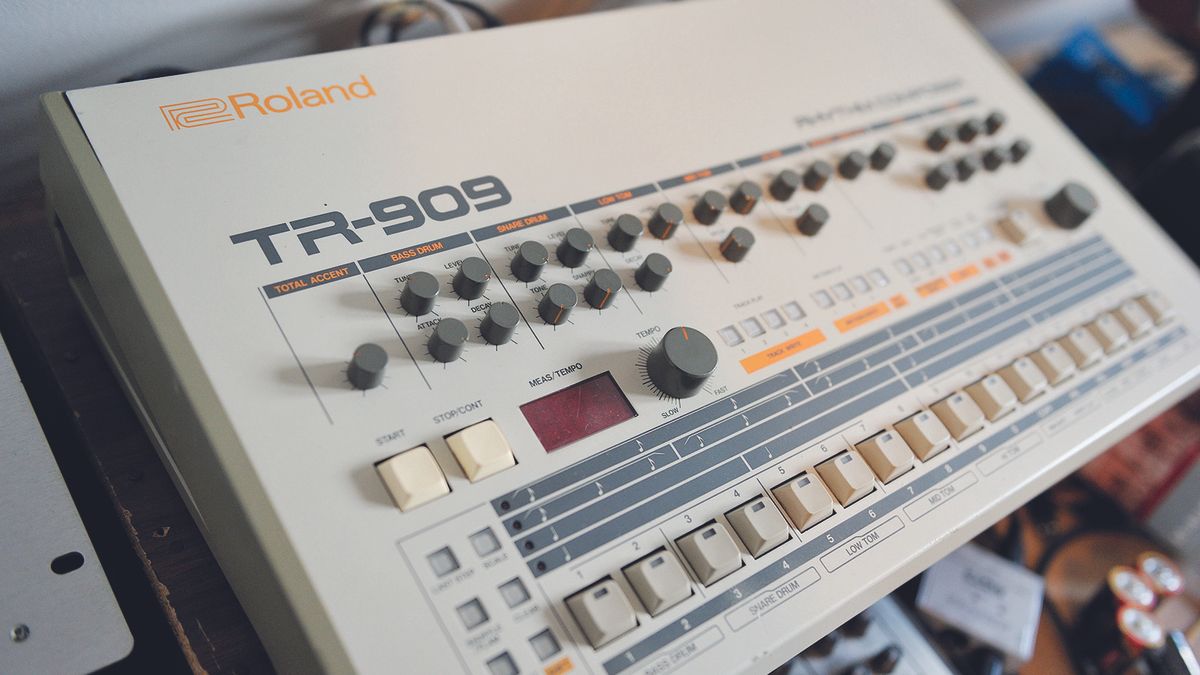Daft Punk's Homework turns 25: discover the gear and production techniques behind the sound
1999 interview confirms a love of Roland gear and an ingenious workflow

Hard to believe, but it's exactly 25 years since Daft Punk released Homework, their seminal debut album. Hugely influential, this was a record that helped to revive house music, and inspired a generation of producers to start talking about 909s and 303s.

Which brings us to a rare and revealing interview that the duo gave to a Japanese magazine way back in 1999, two years after the release of Homework.
In it, the band - Thomas Bangaleter and Guy-Manuel De Homen-Christo - discuss their gear setup and production methods. As you’d expect, they were heavy users of Roland’s TR drum machines and TB-303 BassLine synth, while sampling was taken care of by models from big-hitters of the time such as Akai and E-MU, with the latter company’s SP1200 a notable studio presence.
Daft Punk’s early love affair with Roland gear, meanwhile (let’s not forget that Homework even goes so far as to feature a track called Revolution 909; the drum machine that was allegedly used to create it went up for sale in 2017) is further illustrated by their ownership of a Juno-106, MC-202 and MKS-80.
Despite speculation that the lead sound from Da Funk was created using a Korg MS-20, there's no mention of it on this list.
Effects-wise, it comes as no surprise to see the Alesis 3630 on the kit list - this was a staple of French touch production at the time - and the same company’s Microverb II is there as well. The duo had further processing hardware from Behringer, LA Audio, Waldorf and Yamaha.

The Secret DJ on why bands split, and why we shouldn't mourn the end of Daft Punk
When it came to recording, Thomas Bangaleter explained that sounds were sent through their mixer (a Mackie MS1202) and compressor to the DAT machine (a Panasonic SV-3700), with MIDI sequencing being taken care of by a Mac running Emagic’s MicroLogic (a pre-Apple, entry-level version of Logic that was available at the time).
Get the MusicRadar Newsletter
Want all the hottest music and gear news, reviews, deals, features and more, direct to your inbox? Sign up here.
Following some effects processing, sounds from the DAT were then sent to a Roland S-760 sampler to be spliced up, before these bits and pieces were sequenced from the Mac and finished tracks recorded back to the DAT.
It’s all a world away from the joined-up, in-the-box music production world we live in today; Daft Punk were still using zip drives back then, a very ‘90s storage solution. However, many would argue that the relatively primitive nature of their setup was what gave their early music its charm, and that, as technology has given us more creative options, something else has been lost.
Further reading
If you want to dig a little deeper into the Daft Punk Homework synth sound, check out Reverb Machine's excellent article, which features superb remakes of Da Funk and Around The World, all created in software.



I’m the Deputy Editor of MusicRadar, having worked on the site since its launch in 2007. I previously spent eight years working on our sister magazine, Computer Music. I’ve been playing the piano, gigging in bands and failing to finish tracks at home for more than 30 years, 24 of which I’ve also spent writing about music and the ever-changing technology used to make it.

“I’m not the technical producer, I’ve learned how to use a compressor but I haven’t learned why it does what it does”: Revisiting the intuitive production skills that made Avicii a superstar

"The main thing holding people back is that they don't believe their music's good enough, when most of the time it is": Ambient grime producer Mr. Mitch on his new album, the challenges of being a producer, and the secret to finishing more music
Most Popular







